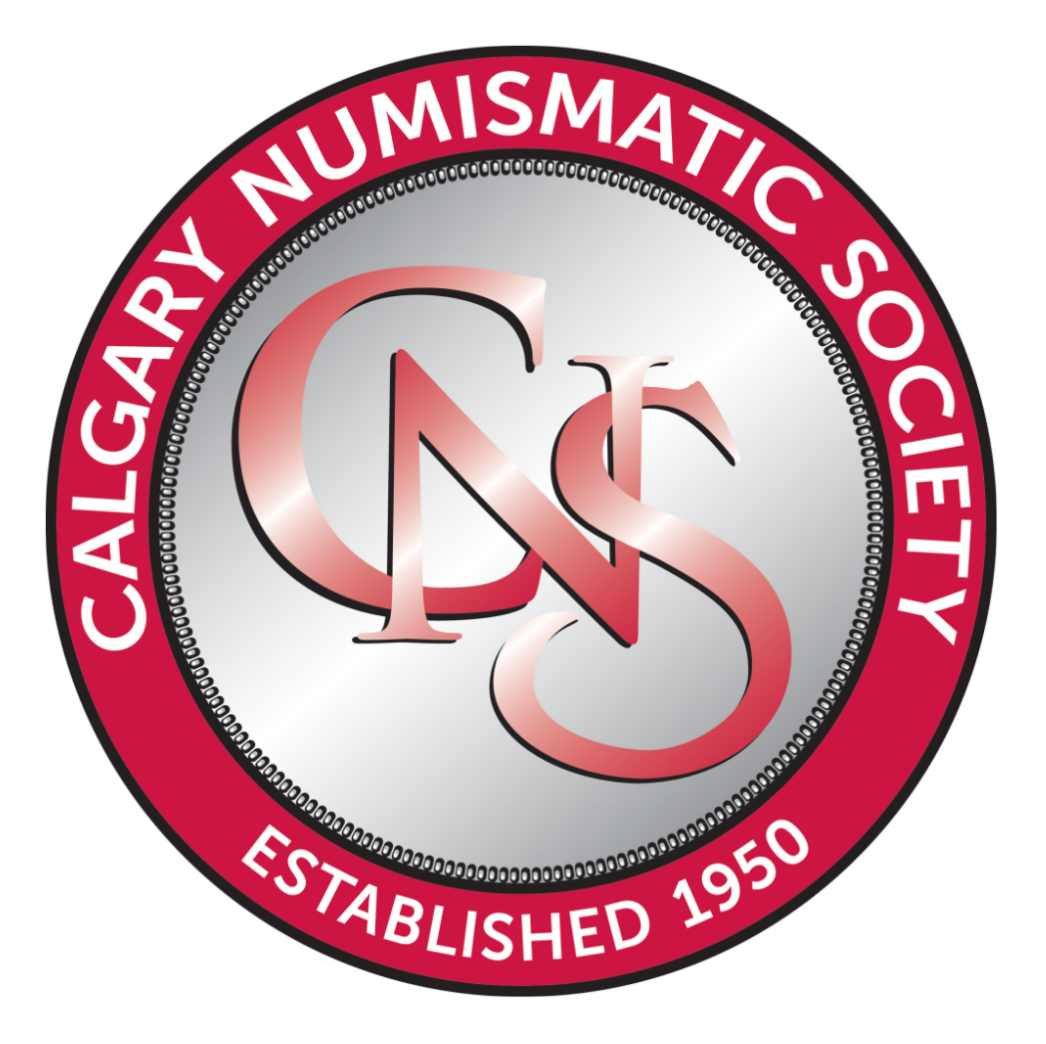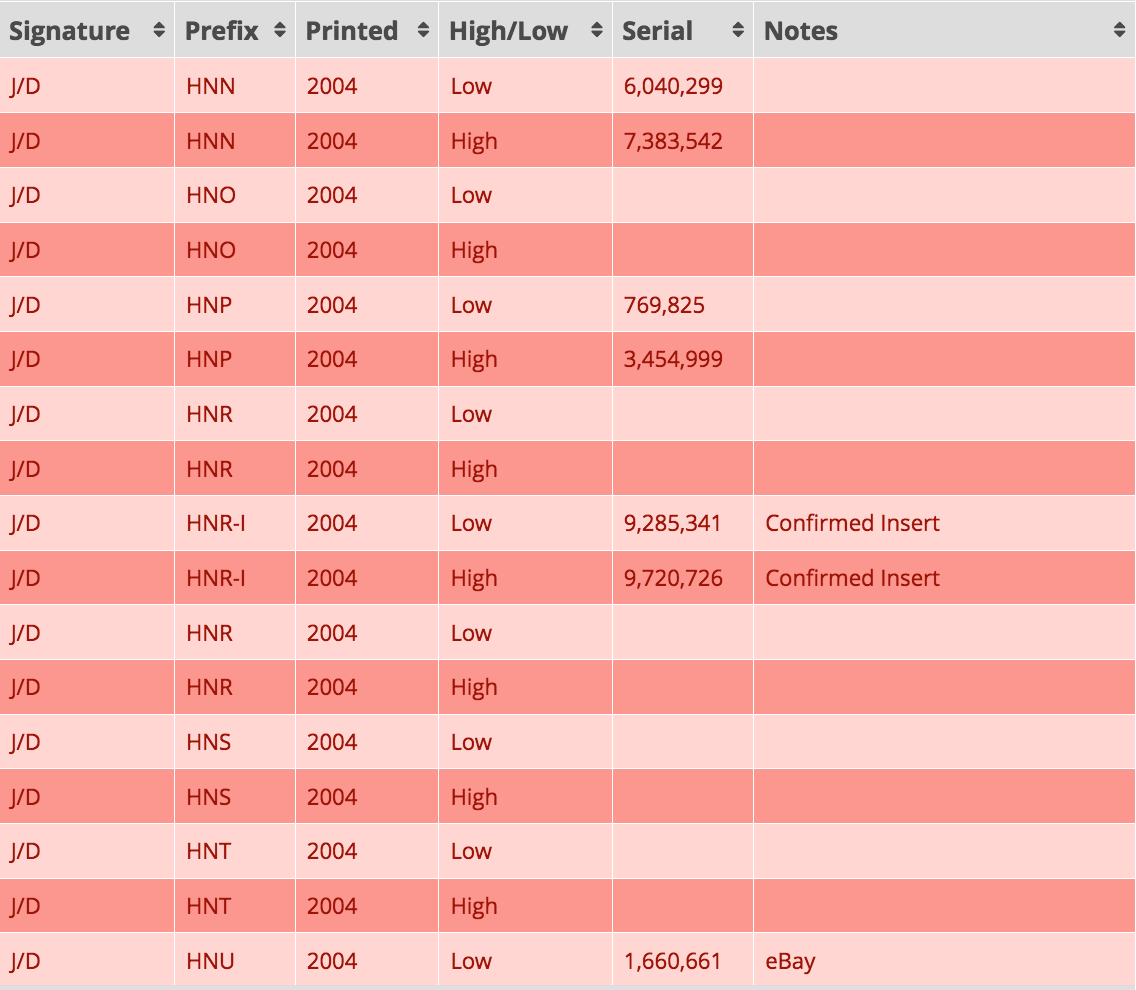Journey Series Replacements - Part 1
The author received the 2005 Jerome H. Remick III Literary Award for this article.
This award is given annually by the Canadina Numismatic Association to the author of the best
numismatic article published in a local Canadian coin club newsletter during the previous calendar year.
Journey Series Replacements - A Breakdown
By Tory Carlson
"I don't know what to collect, there are so many numbers, so many prefixes, so much confusion. It was a lot easier in the old days. All I had to look for was;an asterisk or an x. "This is a statement from an older collector here in Calgary. A statement many of you have probably said or heard from another of your peers.
The new Journey Series replacement notes have proved to be very frustrating for many collectors and for many dealers and researchers as well. That is because there are no identifiable symbols or letters that mark them as replacement notes.
I will try to explain as simply as I can, with the help of some tables. The only possible way to identify the new replacement notes is by going through bricks of notes. To make it simpler I will use the Journey $5 as an example.
A brick of $5's is comprised of 1,000 notes, consecutively numbered (eg. AAA0000000-AAA0000999) and banded from the bank. If you went through all the notes and somewhere in the brick you found 4 different notes with different prefixes, these are probably replacements. If you went through a "bundle" of notes. (100 notes banded) and found the same thing, 4 different notes in the middle of the hundred, I would be suspect to say these are replacements. Unless they fall into a range already identifiable by a brick counter. What sometimes happens in a bundle of 100 is somebody has already gone through them as a brick and may have found replacements in the brick and put ordinary notes back in the bundle so they can take it back to the bank as a full brick. At the bank they can separate the brick into bundles of 100. Band them for ease of counting and confuse the collector when you find 4 different notes in a bundle. It can get frustrating and confusing.; I guess all I am saying is you have to go through a brick of 1,000 notes to verify if they are actual replacements. Remembering that most bricks do not contain replacements. My guess is 1 in 10.
The newly designed Canadian bills focus on history, culture and achievement. The new series was introduced in early 2001 with the $10, featuring Sir John A. Macdonald with the library of parliament on the face side. On the back, a theme of remembrance and peacekeeping. The $10 is printed on 75% cotton-25% Kraft fibre paper and produced by the Canadian Bank Note Company.
This was followed up by the $5 in 2002. This note features Sir Wilfrid Laurier with the west block of parliament on the face side. The back features children at play. The $5 is printed on 75% cotton-25% Kraft fibre paper and produced by the British American Bank Note Company.
The $100 was introduced into circulation in March of this year. The front of the note features Sir Robert Borden. The back of the note exhibits an exploration and innovation theme, with a map of Canada, the Radarsat - 1 Satellite as well as an excerpt from Miriam Waddington's poem, "Jacques Cartier in Toronto".
The new Journey $20 is going to be unveiled on August 25. 2004 and entered into circulation beginning on September 29, 2004. The new $50 will probably be released early in 2005.
New features on all of the Journey Series notes include raised dots for the visually impaired and security elements such as ultra violet light detection and fibre thread, micro printing, ghost images, holographic stripe, watermark and raised print (intaglio).
Replacement Note
A replacement note is a note that is used to replace another note damaged, misprinted or mishandled during the processes of making the note. The 1954 issue was the start of asterisk replacement notes. A small asterisk was printed to the left of the serial number. The asterisk replacement notes were used on all denominations and through a couple of series until the end of the asterisk last seen on the 1975 $100. The 1979 issue of the $5 and $20 dollar notes used serial number designation for replacement notes as they did not have any letter prefixes. The replacement numbers for the $5 started with 3100. The replacement number for the $20 started with 5100 and 5160. The later printed multicoloured series notes and the bird series notes, which are in circulation today, have a three letter prefix. The replacement designation on these notes is an "X" in the third position of the letter prefix, which is still in use on the denominations that have yet to be changed to the Journey Series.
On the Journey Series replacement notes there is no asterisk or "X" to identify replacement notes. The Bank of Canada has decided to use regular blocks of notes which have been set aside, and insert them as necessary. Some have called these replacement notes, the unidentifiable replacement notes for the lack of an identifiable symbol or letter designation.
What we end up with are ranges of notes. As you see on the $5 ,$10 and $100 Journey Series notes they just appear to be regular notes but research has indicated these notes fall into specific ranges (confirmed by the Bank of Canada), that prove they are replacement notes.
As you may or may not be aware there has been a recent signature change. You should be seeing Mr. Paul Jenkins (new deputy governor) signature on the $5 (the change-over is some where between HNN3,000,000 and HNN5,800,000). As well as the new $100 and the new $20 due out in September. His signature should appear on the $10 at any time.
In the next CNS Bulletin I will illustrate the wide variety of replacement notes that have been found on the $5 Journey Series notes
The tables enclosed show the $5 Journey Series high/low numbers reported and the ranges of replacements that have been reported and researched.
Thanks to Paul Wallis of the Canadian Paper Money Forum who has allowed me to use some of his tables.
It is further noted the Charlton Canadian Government Paper Money Catalogue lists these ranges and prefixes as the research has been and will be submitted by collectors, hobbyists and numismatists across Canada.
Please visit the forum for up to date research on the other denominations at www.cdnpapermoney.com or feel free to contact me at westerncanadiancoin@telus.net for more information or any questions.

